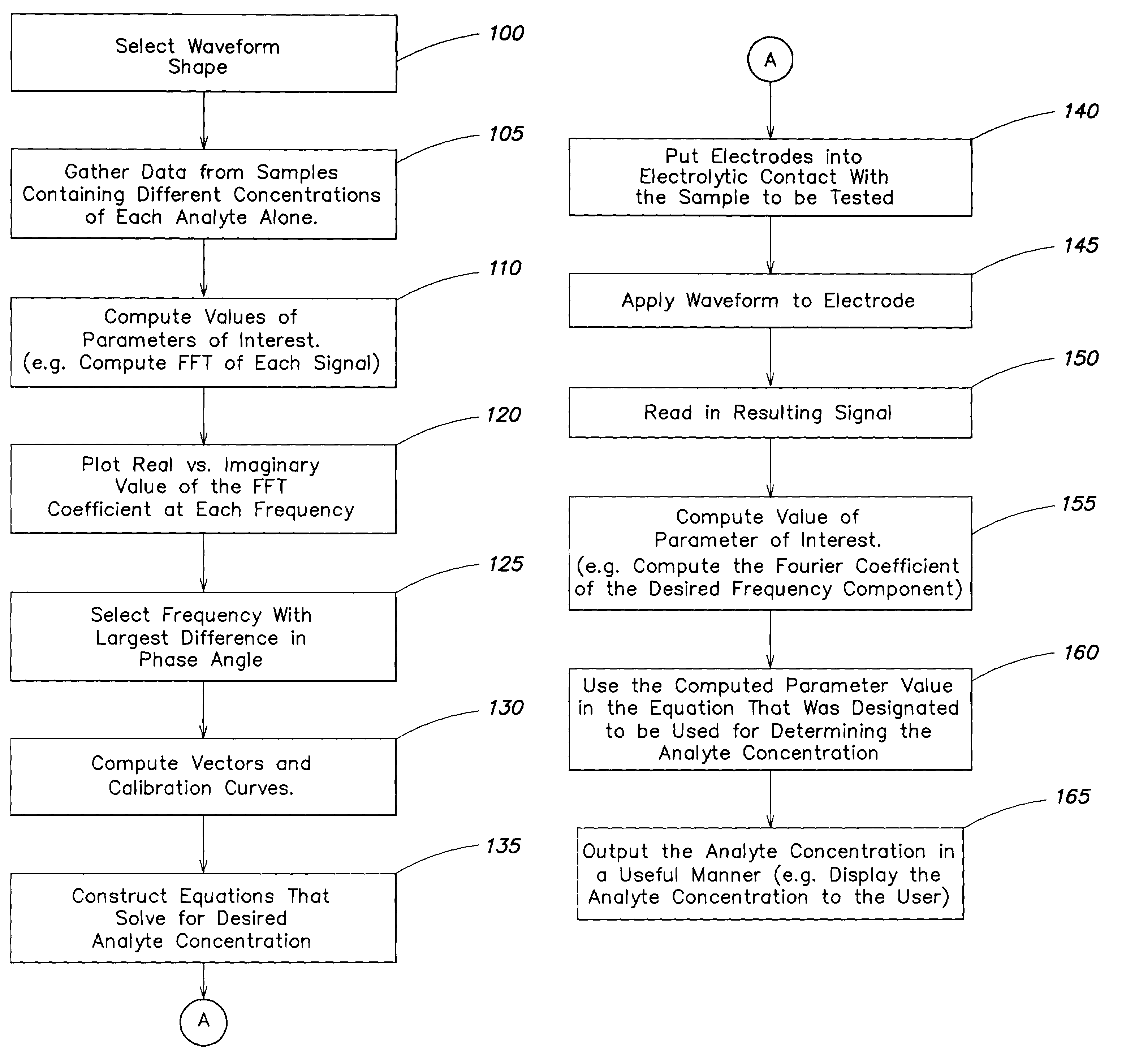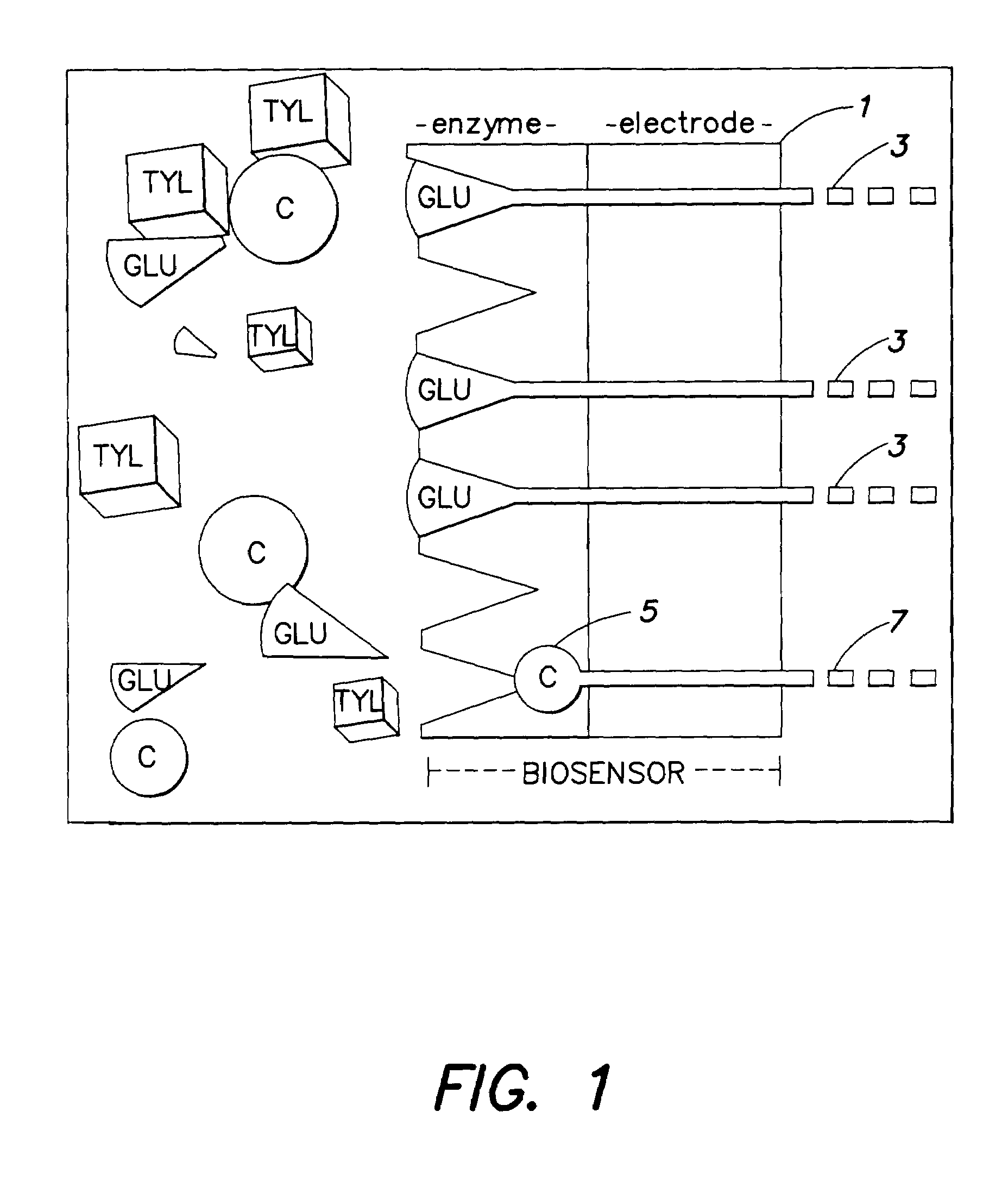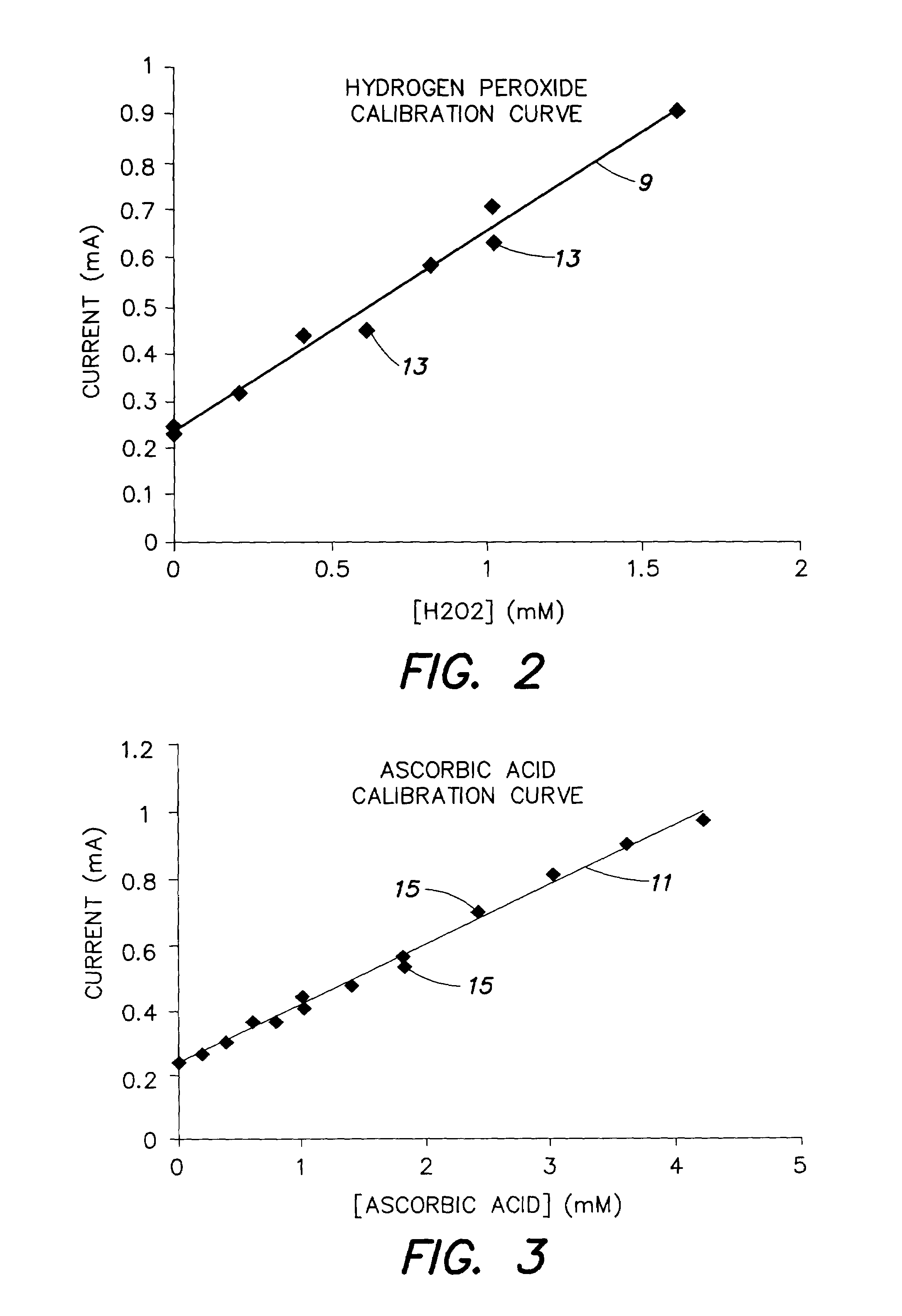Method and apparatus for processing electrochemical signals
a technology of electrochemical signals and processing methods, applied in the direction of liquid/fluent solid measurement, material electrochemical variables, instruments, etc., can solve the problems of reducing the selectivity and concentration reading of electrodes, inaccurate readings, and erroneous readings, so as to improve the selectivity and productivity of sensors
- Summary
- Abstract
- Description
- Claims
- Application Information
AI Technical Summary
Benefits of technology
Problems solved by technology
Method used
Image
Examples
example 1
[0067]An example of the method of FIG. 6 and system as carried out by, for example, a system of FIG. 7, is now described in terms of analyzing the concentration of a sample containing peroxide and ascorbic acid. A 700 mV potential stimulus waveform shown in FIG. 9 was used (step 100). The scan rate of the stimulus waveform was 100 mV per second in both the upscan and downscan directions. The resulting current was sampled in time at a sampling frequency of 40 hz. The spectral content of the current signal was computed with the fast Fourier transform (step 110).
[0068]FIG. 10 shows the complex Fourier coefficients for 0.4506 hz, which had the best separation between the analyte vectors. The open squares represent measurements made with the sample that contained peroxide and no ascorbic acid. The black triangles represent measurements made with a sample that contained ascorbic acid and no peroxide. (See steps 105–120). Vector 101 represents the baseline background signal ({right arrow o...
example 2
[0101]An example was performed using the method shown in FIG. 14. Glucose was the target analyte with ascorbic acid acting as the interferent, and blood as the sample matrix. The waveform shown in FIG. 16 was selected as the stimulus to be applied to the sample.
[0102]The waveform combines both cyclic voltammetry and DC amperometry. The potential is ramped in the upward direction at 250 mV / s, in the downward direction at −250 mV / s (the CV part of the signal), and is held constant at 0.4 V beginning at 57.6 seconds and ending at 64 seconds (DC amperometric part of the signal).
[0103]The “head” of the signal refers to the signal collected with this waveform between 0 seconds and 20.8 seconds, inclusive. In this case, the signal is sampled at 40 Hz, thereby providing 833 samples. The “tail” of the signal refers to the signal collected with this waveform between 61.475 seconds and 63.975 seconds, inclusive, giving 101 samples.
[0104]In this example, the following principles were observed.[...
PUM
 Login to View More
Login to View More Abstract
Description
Claims
Application Information
 Login to View More
Login to View More - R&D
- Intellectual Property
- Life Sciences
- Materials
- Tech Scout
- Unparalleled Data Quality
- Higher Quality Content
- 60% Fewer Hallucinations
Browse by: Latest US Patents, China's latest patents, Technical Efficacy Thesaurus, Application Domain, Technology Topic, Popular Technical Reports.
© 2025 PatSnap. All rights reserved.Legal|Privacy policy|Modern Slavery Act Transparency Statement|Sitemap|About US| Contact US: help@patsnap.com



